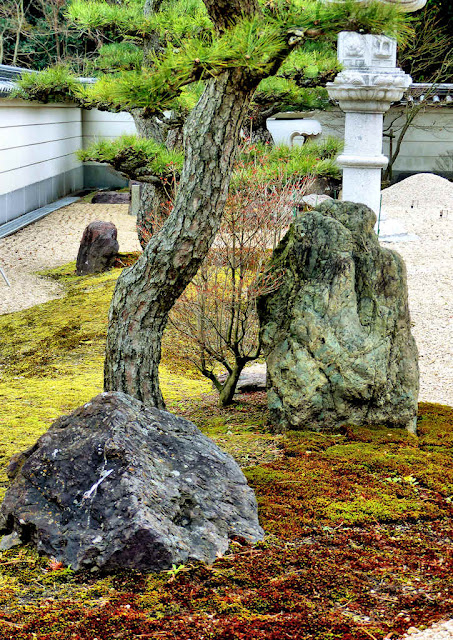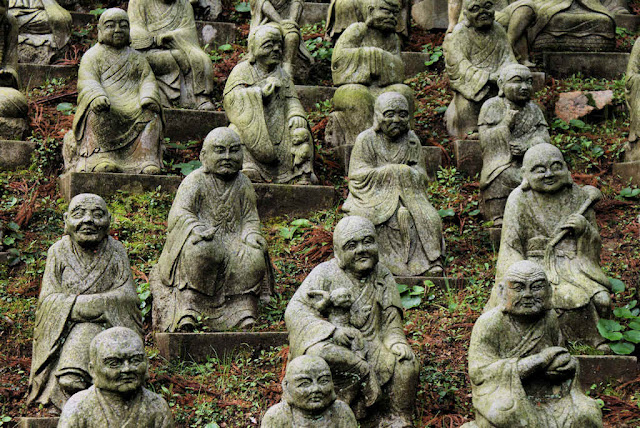The Kannon-do and Kaisan-do are the two structures above the main part of Sennyoji Temple.
The Kannon Hall was built around 1880 and as well as the amazing Kannon statue, also has many other statues, mostly, like the Kannon, from the Kamakura Period.
I suspect these were all transferred from the shrine-temple complex when the Buddhas and Kami were separated in early Meiji.
The Thousand-Armed Kannon is quite impressive and is a National Important Cultural Property.
The other statues were also very nice, most easily recognizable was a Fudo and an En no Gyoja.
The most unusual was, what I believe to be, the Japanese version of Garuda...
From the Kannon Hall the steps lead up to the Founders Hall.
This is a newer building, dating to 1990, and is modelled on
Fukiji Temple in Kunisaki, the oldest wooden building in Kyushu.
The founder is said to be Seiga Shonin, a monk from India who established several temples on this mountainside in the year 178. This was more than three and a half centuries before Buddhism was "officially" introduced into Japan. The story first appears in print in the 13th century.
It is known that Buddhist statues have been found in western Japan before the official introduction. Trade and travel between northern Kyushu and the mainland had been going on since the beginning, but is such a story even possibly true?
Well, actually, yes!.... Buddhism had been in China for about a century by 178. Brought by travelers along the Silk Road, travel between China and Japan had also been going on for some time. In the first century a "king" in this part of Kyushu had been given a gold seal by the Han Emperor, the infamous Gold Seal of Na, so the idea that Silk Road travelers did not travel past China to the Japanese islands is not far fetched. Of course, an exact date of 178 is a bit improbable, but dating in Japanese prehistory is extremely fanciful when based on documents like the Kojiki anyway.
The interior of the Hall is very colorful and golden with paintings of the 4 Heavenly Kings on the pillars, and the 8 Great Bodhisattvas, and the 12 Heavens painted on the walls.







































































